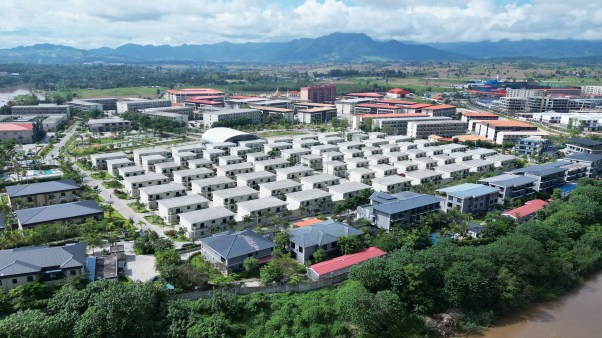Rage is today’s ruling online emotion. So concluded a 2013 study of Chinese mini-blogging network Weibo—a platform that resembles Twitter and boasts twice as many users.
Beihang University researchers examined 70 million Weibo “tweets” over a six-month period, sorting them by anger, joy, sadness, and disgust. Rage was the emotion most likely to spread across social media, with one angry post powerful and persuasive enough to negatively influence a follower of a follower of a follower.
In other words, that angry tweet of yours has the potential of fomenting rage to the third degree! But it’s not just our smartphones sowing the seeds of all this discontent.
Edward Wasserman, dean of the Graduate School of Journalism at the University of California–Berkeley, was quoted in Scientific American as saying, “Mainstream media have made a fortune teaching people the wrong ways to talk to each other, offering up Jerry Springer, Crossfire, Bill O’Reilly. People understandably conclude rage is the political vernacular, that this is how public ideas are talked about.”
Little wonder, then, that our collective anger spews forth at politicians who lie, at systems that discriminate, at businesses that exploit, at abortionists who murder, at pastors who fall, at police who kill, at those who kill police, and at injustices whenever they manifest themselves.
Anger and frustration are everywhere. We see it and feel it every day. But what’s driving it? According to Rabbi David Wolpe, the answer has to do with our sense that tomorrow may not be any better than today.
“All of us,” conjectures Wolpe, “[see] history as an ever-increasing march to enlightenment. If you believe that things should get better and better, then it is infuriating when they do not.”
Wolpe is on to something, to be sure. But I believe our disappointment goes even deeper. It’s not just that we’re not making progress, it’s that we have this unshakable sense that something has gone terribly wrong. Deep within we believe that life should be good and true and beautiful, but it is far from it. And when the information highway becomes a daily demolition derby, as it so often does, we strike out in frustration.
Christians believe that our longing for the good, the true, and the beautiful finds its completion in Jesus Christ—the Way, the Truth, and the Life. Indeed, our hearts are restless and angry until they find their rest in him. But even we Christians have a hard time grasping and living into the fullness of this reality.
As a result, some of us hold tenaciously to the liberating power of the great Christian doctrines and the wisdom of Christian ethics. But in our grasping, we lash out at the evils of our times, being “prophetic” about “objective truth” and “traditional values.” And in so doing, we inadvertently imply that God loves only those who believe and obey the truth—namely, us. Consequently, we come across as smug and self-righteous, embracing an ugly orthodoxy.
Still others, in reaction, soften the gospel to make it more relevant and pleasing to the ear of a culture that so desperately wants to feel good about itself. We are quick to marginalize what is derisively called “dogma” and question values that have stood the test of time. The last thing we want to do is make anyone feel uncomfortable about their choices. God, after all, is our very Creator, and he accepts us just the way he made us.

Or so says the logic of beautiful heresy.
Both of these seemingly irreconcilable approaches abandon one aspect or another of the full gospel we are called to believe and live. They give up either orthodoxy or beauty, and in so doing end up with a Jesus who is only half man and half God.
Jesus Christ is indeed the Way and the Truth—all that we mean by “orthodoxy.” Orthodoxy is a way of life grounded in truth, and a truth that expresses itself in all of life. To be orthodox is to know the truths that set one free (the classic doctrines of the Christian faith) and to live out that freedom in daily life by the virtues that have stood the test of time.
Yet Jesus Christ is also the Life. This means he is the one who conquers death and offers life eternal to all. But as many biblical scholars have noted, “eternal life” is about a life of unimaginable quality. A life of beauty.
“Beauty,” wrote psychologist Rollo May, “is the experience that gives us a sense of joy and a sense of peace simultaneously. … Beauty is serene and at the same time exhilarating; it increases one’s sense of being alive. … Beauty is the mystery which enchants us.”
One might even paraphrase our Lord and say that Jesus Christ is the way, the truth, and the beautiful.
Beauty fills us with joy and peace precisely because it indirectly and mysteriously manifests the one who is the Life. One might even paraphrase our Lord and say that Jesus Christ is the way, the truth, and the beautiful. Or to put it more succinctly, it is in Jesus Christ that we can know, relish, and live into what we here at CT call a “beautiful orthodoxy.” It is in Christ alone that we can know, relish, and live into the truly good, the truly true, and the truly beautiful as manifested in Jesus’ life, death, and resurrection.
The Truly Good
A few years ago, Robert Fulghum caught the public’s imagination with his book All I Really Need to Know I Learned in Kindergarten. In its opening pages, Fulghum lays out his formula for “the good life,” which includes such moralisms as “Share everything. Play fair. Don’t hit people. Put things back where you found them.”
All commendable guidelines for basic living. But Christian beliefs about the good come not from our moral imaginations, but from a source outside ourselves. We believe a good God has revealed himself to the world, first through the people of Israel and then supremely in Jesus Christ. And the Bible contains some of the most succinct and beautiful expressions of the good, beginning with the Ten Commandments.
But Christian ethics are not merely a refined form of moralism. Jesus, in fact, seems to distance himself from such a common understanding of the good. His exchange with the rich young man in Mark 10 is one case in point.
In that story, a man approaches Jesus and asks, “Good teacher, what must I do to inherit eternal life?”
The man was showing respect to an admired religious figure. But surprisingly, Jesus would have none of it. “Why do you call me good?” Jesus answers. “No one is good—except God alone” (Mark 10:18).
This statement mystifies because we think of Jesus as a good person—in fact the best person there ever was. But Jesus, who certainly was the best person there ever was, doesn’t want to be thought of in this way.
Jesus did this sort of thing time and again. He was regularly accused by the righteous people of his day—notably the Pharisees—of cavorting with Jews who betrayed their country (helping Romans collect oppressive taxes) and with those who refused to follow God’s law.
To be sure, Jesus never renounces the good. He tells his followers that their righteousness must exceed even that of the moral exemplars of the day (Matt. 5:20). But the emphasis of his ministry falls not on the good as such, but on the good that is called mercy—the grandest theme of the New Testament.
God’s mercy toward the ungodly in Jesus Christ changes the calculus of the good life. The criterion of good is not so much excelling at ethics or religion but living and acting with a deep sense that one is a failure in ethics and religion.
This self-acknowledged failure to live up to God’s law paradoxically cultivates a radical new way of conceiving of the good life. An incident in John 8 illustrates this most powerfully. The teachers of the law and the Pharisees had dragged a woman before Jesus.
“Teacher, this woman was caught in the act of adultery,” they told Jesus. “In the Law Moses commanded us to stone such women. Now what do you say?”
Jesus bent down and started to write something on the ground with his finger, saying nothing. But they kept badgering him. What he said, after a seemingly long pause, is one of the most memorable lines in history: “Let any one of you who is without sin be the first to throw a stone at her.”
At this, the woman’s accusers slipped away one at a time until all were gone. Jesus stood up and asked the woman, “Where are they? Has no one condemned you?”
“No one, sir,” she replied.
“Then,” he said, “neither do I condemn you.”
In that phrase, we see how we are to regard all whom we encounter day to day: “Neither do I condemn you.”
In other words, as good as the good life is, there is something even better. Jesus certainly maintains the ideal of the virtuous life, but he condemns those who falsely imagine they live up to it. And he blesses people who admit they do not live up to it.
He commands us to pursue the good, but only as it is framed by mercy.
The Truly True
Orthodoxy is a word Christians use to suggest a set of beliefs that, taken together, we believe best reflect reality. Among these are such classic doctrines as God creating the universe as good and creating man and woman in his own image, the fallenness of humanity from a state of God’s grace, Jesus’ incarnation—his life, death, and resurrection for the forgiveness of sins—and God’s eventual return and his creation of a new heaven and earth.
But as is the case with every age, the living out of such truth—even the meaning of such truth—falls victim to cultural confusion.
There is a powerful movement in our society, for example, that assumes that the body simply does not tell us much about what it means to be human. Consequently, it’s unquestioned in some quarters that one can be born with a male body while actually being a female. Or it’s assumed that one’s sexual organs have no bearing on the sexual partners one should pursue.
For the Christian, such a worldview is not truthful; it doesn’t accord with life’s deepest realities. God confirmed that “matter matters”—that bodily existence is the blessed essence of our being—when he “became flesh” and “dwelt among us,” dying for us in the body and rising for us in the body.
Yet as he did with the idea of the good, Jesus transcends this understanding of the true by identifying himself as the Truth. Truth entails certain beliefs, yes. But for the Son of God, truth is personal:
But when he, the Spirit of truth, comes, he will guide you into all the truth. He will not speak on his own; he will speak only what he hears, and he will tell you what is yet to come. He will glorify me because it is from me that he will receive what he will make known to you. (John 16:13–14)
Truth is so personal that it dwells within us in the Holy Spirit. Thus the truth of God is first and foremost about knowing God personally in Christ. It is more than knowing something about God; it is “having God in oneself,” as Gregory of Nyssa put it.
A friend of mine tells the story of his attempt to argue his college classmates into the Christian faith. In a class on world religions, he gave what he believed was an unassailable apologetic for Christianity during an assigned presentation. As the class reacted, it became clear that the non-Christians were either bored or hostile, despite what my friend felt was the superior logic of the Christian view. Only years later did he finally grasp that while he may have presented the abstract truths of Christianity cogently, he had failed to also present the person of Jesus Christ in a way that winsomely conveyed that our faith is first and foremost an intimate encounter with the God of truth.
When we don’t frame our apologetics, teaching, and preaching in this way, our presentation of Christ will not be fully true, let alone attractive.
The Truly Beautiful
Recent social science research finds a link between beauty and happiness. Cody C. Delistraty, in an Atlantic article titled “The Beauty-Happiness Connection,” writes that in addition to the usual markers of happiness (wealth, family, health, and so forth), “What makes people happiest … is living in an aesthetically beautiful city.” He says that when people are embedded in beauty—“lovely architecture, history, green spaces, cobblestone streets”—they are happier.
From the Christian’s perspective, beauty also helps us catch a glimpse of the Source of all beauty. As theologian Jonathan Edwards put it:
When we are delighted with flowery meadows and gentle breezes of wind, we may consider that we only see the emanations of the sweet benevolence of Jesus Christ; when we behold the fragrant rose and lily, we see his love and purity. So the green trees and fields, and singing of birds, are emanations of his infinite joy and benignity; the easiness and naturalness of trees and vines [are] shadows of his infinite beauty and loveliness; the crystal rivers and murmuring streams have the footsteps of his sweet grace and bounty.
Yet once again Jesus suggests that there is a beauty that transcends the beauty that brings delight. Ultimate beauty elicits not merely pleasure but a sense of awe. Even a type of fear.
Jesus Christ on the cross would be the supreme example. There is nothing pleasurable about this picture. It is gruesome and ghastly: “He had no beauty or majesty to attract us to him, nothing in his appearance that we should desire him” (Isa. 53:2).
Yet do we not believe that the Crucifixion was beautiful in the deepest sense—that is, “lovely” in the sense that it is the ultimate picture of love? Does it not make us tremble with both remorse at our sin and repulsion at the suffering of the Son of God? Does it not lead to renewed repentance and fresh forgiveness? Does it not cast us down in humiliation and lift us up to the shining mountain of transfiguration? Does it not allow us to enter into the mystery of death and the mystery of life, a life Jesus calls “eternal” and that he says is nothing less than participation in him, the life, the dying and rising one (John 14:6)?
This is ultimate beauty. This is why, in John’s gospel, the Crucifixion is the ultimate manifestation of God’s glory—it is the hour that the name of God is glorified (John 12:27–28). Glory is a word normally associated with great beauty and splendor, but here it points to something closer to fearsome magnificence.
At a practical level, Christians ought to be people who practice making life beautiful. This certainly includes encouraging fellow believers who have a call to paint or sculpt or design or create music—or express any of the arts. It’s not an accident that the Middle Ages and Renaissance, when Europe was predominantly Christian, produced many of the great works of art and architecture that are still creating a sense of awe today.
But we don’t have be a talented artist to bring beauty to our world. I remember my days as a grad student, when a fellow classmate made a point of putting flowers on a table stationed at the entrance to our dorm. It seemed an almost silly gesture at first. But over time I was surprised by how it positively shaped my feeling when I stepped into the otherwise drab institutional hallway. It was a small but significant witness in my mind to the beauty of Christ.
When we participate in the sufferings of Christ on behalf of the poor, the lost, and the vulnerable, we bodily express in a small way the beauty of Christ on the cross.
Of course, the most profound sense of beauty, one that prompts both awe and admiration, is self-sacrifice for others in acts large and small, including the family that adopts one or more special-needs children, the advocate who protests abortions or racism at the risk of arrest, the Syrian martyr who dies with confident faith as a terrorist cuts his throat, the spouse who forgives an unfaithful partner, or the hospice volunteer who sits with the dying day after day. When we participate in the sufferings of Christ on behalf of the poor, the lost, and the vulnerable, we bodily express in a small way the beauty of Christ on the cross.
Beautiful Orthodoxy
In the end, though, the good, the true, and the beautiful are not about us and how well we exemplify them, but about the one who calls himself the Way, the Truth, and the Life. Consequently, beautiful orthodoxy is not so much a cause or a set of behaviors as it is a spotlight on the one who is goodness, truth, and beauty.
We, therefore, as Christ’s followers, must continue to look to him who is above—and within—this broken world. We must rely on the mercy of God to do the good. We must seek and know the personal presence of Jesus Christ as we speak the truth. And we must want to be not merely a good and truthful presence in the world, but one that reflects the very mysterious beauty of God as well. Even in our own suffering.
This is beautiful orthodoxy. We cannot hope to live it perfectly, but the Lord is gracious and will use even our meager efforts for his glory. And as we seek to live it, he promises to make himself known as the one who can turn the world’s mourning—and ranting and raging—into joy and dancing.
Mark Galli is editor in chief of Christianity Today. This article is condensed from the book Beautiful Orthodoxy, which can be purchased at orderCT.com/beautifulorthodoxy.










